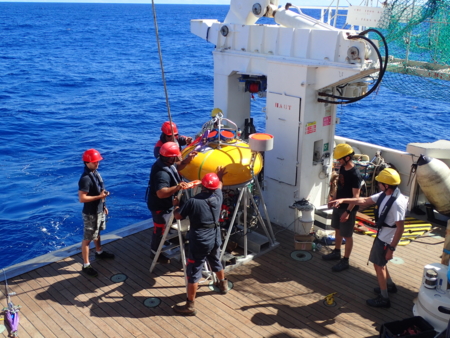ScInObs : Science, Innovation and underwater observatories
The ScInObs New Caledonia project was born out of discussions in the framework of the Franco-Japanese maritime dialogue between Jamstec and Ifremer. The project elements were discussed in September 2019 in Noumea during a workshop bringing together the main stakeholders from Ifremer and Jamstec and stakeholders from New Caledonia. ScInObs New Caledonia's objective is to develop and manage a sustainable observatory project in the South West Pacific.
Created in 2014, the Coral Sea Natural Park (CSNP) covers the entire EEZ of New Caledonia, i.e. 1.3 million km². It has a rich biodiversity with many deep-sea habitats such as seamounts in the south, and active submarine volcanoes and deep trenches in the east. New Caledonia has chosen to focus its economic development on the preservation of this natural wealth. The ScInObs New Caledonia project is fully in line with this concern.
The project’s objectives are the following :
Seamount studies
Due to their elevation above the sea floor ( >1000m or < 100m depending on the definition), seamounts are unique underwater structures. An important number of these structures can be found in the Pacific and have an active role in the ocean. They are indeed hot spots of diversity and biomass, and their increased productivity attracts fish and marine mammals. Seamounts are therefore often subject to fishing effort that impacts benthic habitats. They are also potential targets for mineral exploitation as these environments favour the development of cobalt crusts.
Because of their extension along the bathymetric gradient, seamounts are key systems for studying the coupling between benthic and pelagic compartments and the effects of climate change on deep-sea ecosystems. There are currently very few long-term studies of the oceanographic or biological dynamics of seamounts and the New Caledonian marine parks are currently awaiting recommendations for their monitoring. The development of an observatory via the ScInObs project will be an opportunity to establish and share a monitoring protocol for this type of structure with an integrated multidisciplinary strategy.
KASEAOPE-1 Cruise
A scientific cruise took place in May 2023 as part of the ScInObs project and deployed a mooring line equipped with a list of sensors.
More information can be found on the dedicated page here.





